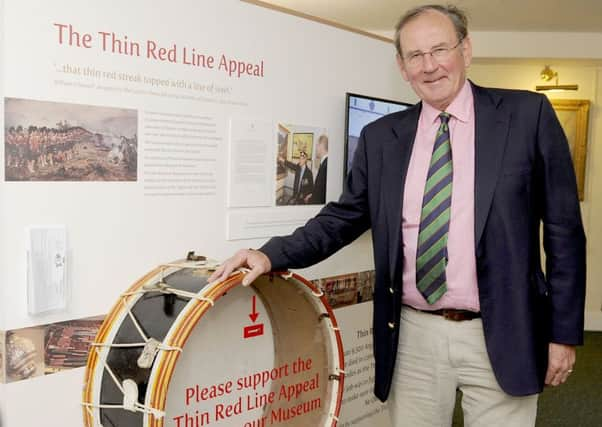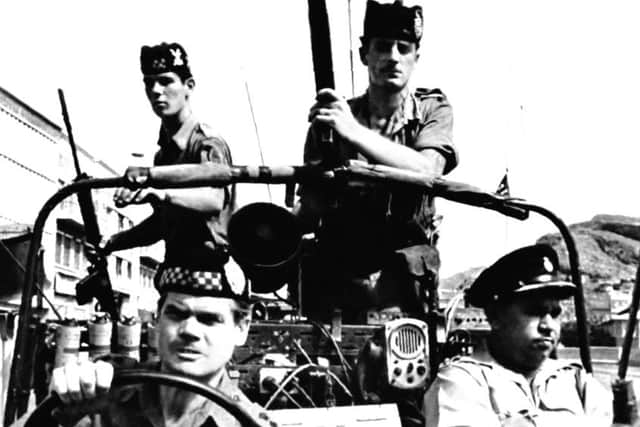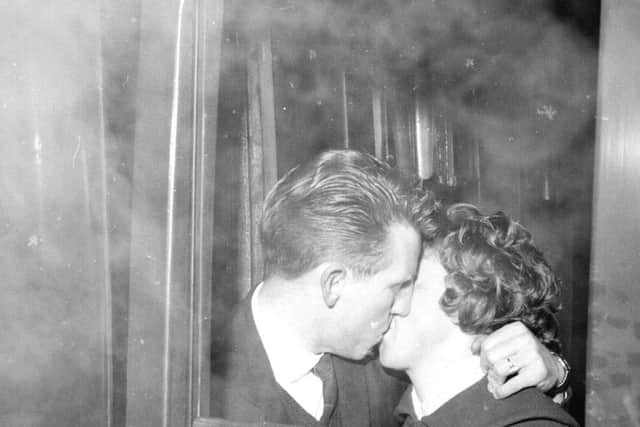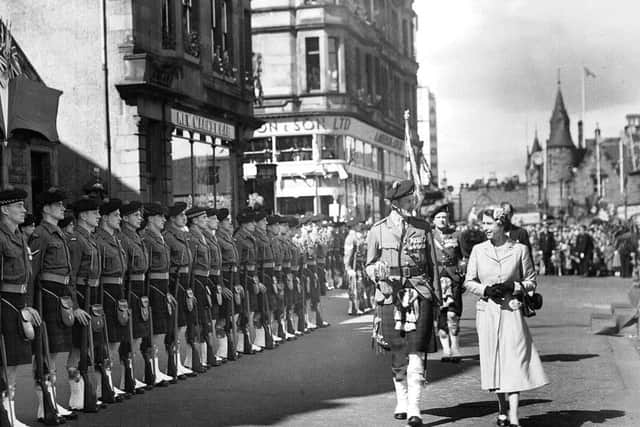Bairns will be immortalised in showcase new museum


The Heritage Lottery Fund has backed the campaign to turn the regimental museum of the Argyll and Sutherland Highlanders into a site likely to be visited by at least 250,000 people per year.
The Thin Red Line Appeal, set up to raise funds for the project, still has to collect the best part of £2 million, but by summer next year Stirling Castle will be fighting off hordes of tourists eager to see the new museum.
Advertisement
Hide AdAdvertisement
Hide AdThe existing one looks impressive enough – forget any notion of dusty relics and faded glories – but the new one might prove the best of its kind in Scotland.


And in it the stories of many Falkirk area men will be brought to a vast local, national and international audience.
“We’re telling the story in ‘themes’ rather than as a chronology,” says Colonel A K Miller, a soldier in charge of the deeply challenging mission of overseeing the transformation.
“It’s a story about communities - like Grangemouth and Falkirk - and how they became entwined with the fortunes of one of the great Scottish regiments”.
Advertisement
Hide AdAdvertisement
Hide AdToday’s museum shows a board detailing the Argylls battalions which fought in the First World War.


There were 1,000 men in a battalion (regular or service), and no less than 27 were fielded in the Great War, in battle zones ranging from Flanders to Gallipoli.
Thousands, as in so many other units, never came home.
The regiment covered itself with glory in the Second World War, and went on to fight in the Korean War and other modern conflicts.
The “Sutherland” part of the title is historic - a 19th century reorganisation took recruitment away from the far north - but vital.


Advertisement
Hide AdAdvertisement
Hide AdIt recalls the regiment’s best-known battle honour, Balaklava, where in 1854 its “thin red line, tipped with steel” faced down the massed ranks of Russian cavalry.
In the finest traditions of the British Army the Argylls took its hard-earned esprit into modern conflicts.
Countless Bairns were in their ranks, every step of the way - not just as fighting men but often as the face of humanity and practical succour in places ravaged by the horrors of internecine conflict.
Older readers will remember the Save the Argylls campaign, and although that battle could not be won the regiment’s incredible story has rightly become immortal.
Advertisement
Hide AdAdvertisement
Hide Ad“You could knock on almost any door in this area and you’d find someone with a connection to the Argylls,” said Colonel Miller.
“The links with the regiment in Grangemouth are particularly strong.
“Now we’ve the responsibility of telling that story to a new generation as effectively as possible.”
There’s a buzz about the regimental museum these days that has nothing to do with the steady stream of tourists already flocking to the site.
Advertisement
Hide AdAdvertisement
Hide AdOperation Argylls is going to be a resounding success – depend on it.
But even before it comes to fruition the existing museum will inevitably be a main focus for people seeking details of the regiment’s experience of the First World War.
In the 19th century British infantry regiments typically had one or two battalions, but during the Great War their numbers multiplied exponentially as the grim realities of modern warfare became painfully obvious.
The Argylls, like so many other regiments, fought in multiple theatres - in the main front, in France and Flanders, and in campaigns often regarded as “sideshows”.
Advertisement
Hide AdAdvertisement
Hide AdOne such was the expedition to Salonika, nicknamed “the Birdcage” because - trapped in a position overlooked by seemingly impregnable mountain-top fortifications - they were confined within what one wit dubbed “the biggest internment camp in Europe”.
Although virtually all of the British coverage of the First World War centres on the Western Front her enemies also included the Austro-Hungarian Empire,Turkey and Bulgaria - and Bulgarian veterans of the Balkan Wars of 1912 and 1913 fought with skill and courage.
The Macedonian front eventually crumbled, as the Bulgarians were worn down by incessant fighting and the Germans had been forced by reverses elsewhere to withdraw their critical support.
The collapse spelled disaster and final defeat for the Austro-Hungarian Empire.
Advertisement
Hide AdAdvertisement
Hide AdIn the Second World War the Argylls’ enemies included the Japanese in the Far East.
In the black and white picture on this page an Argyll bids farewell to his wife or sweetheart before boarding the train at Waverley.
His battalion was bound for Malaya, where it was caught up in the 1942 fall of Singapore - and surrender to the barbaric and criminal Imperial Japanese Army.
An estimated 225 Argylls and Plymouth Argyll Royal Marines died at the hands of their murderous captors before the survivors were liberated in 1945.
We don’t know if this man was among those to perish, or whether he made it safe home at last.